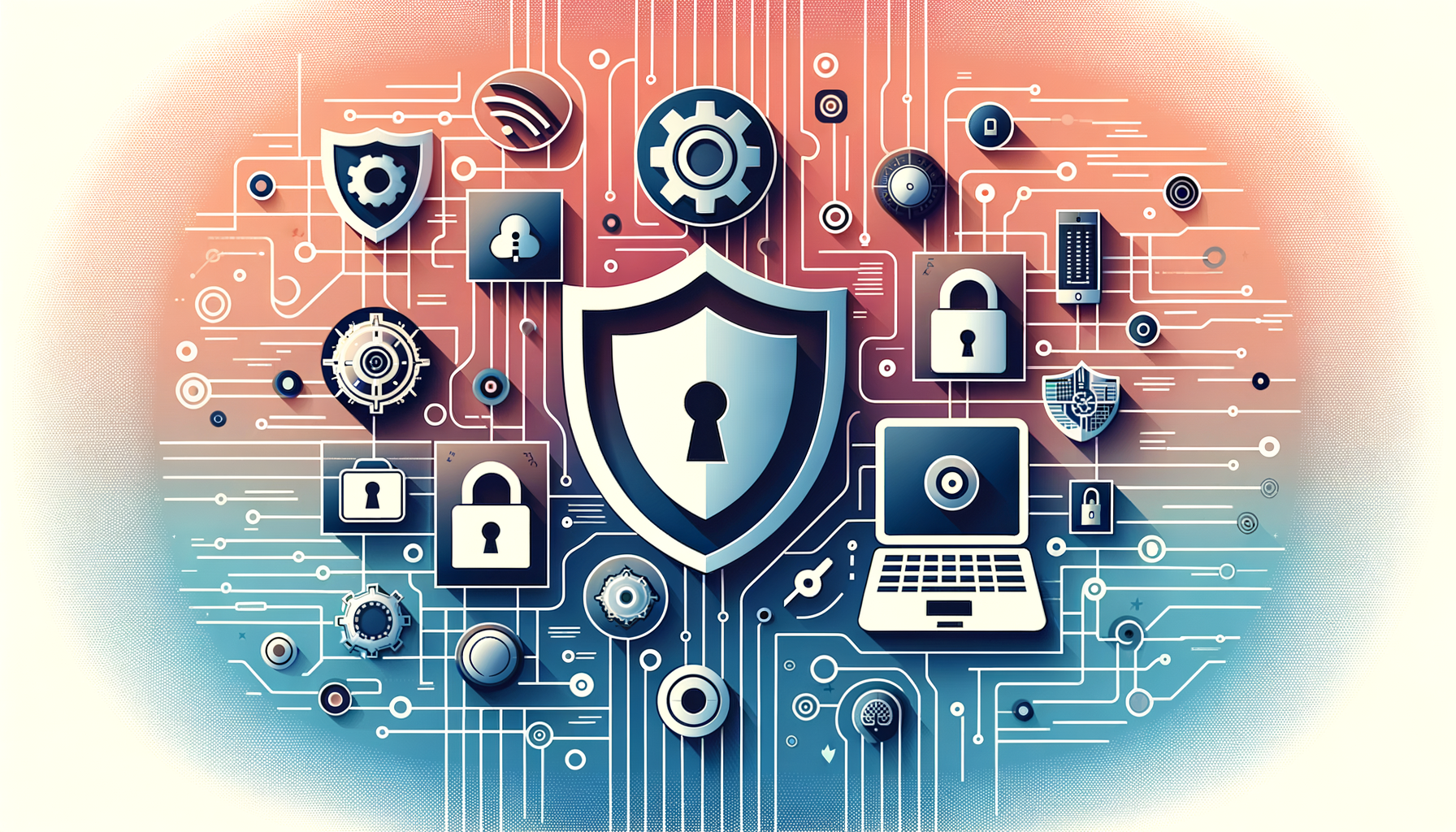
Enhancing WordPress Security: Essential Hardening Techniques for 2025
In the ever-evolving landscape of website development, ensuring the security of your WordPress site is more crucial than ever. With the constant emergence of new threats, implementing robust security measures is essential to protect your website from vulnerabilities and attacks. Here are some comprehensive WordPress security hardening techniques to help you secure your site in 2025.
Understanding the Risks
Before diving into the hardening techniques, it’s important to understand the common risks that WordPress sites face. These include:
- Outdated Software, Themes, and Plugins: Using outdated versions of WordPress, themes, or plugins can leave your site vulnerable to known security flaws[2].
- Weak Usernames and Passwords: Weak login credentials make it easier for hackers to access your site. Avoid using common usernames like “admin” and choose strong, unique passwords[2].
- Brute Force Attacks: These involve repeated attempts to guess your login credentials. Limiting login attempts and using two-factor authentication can mitigate these attacks[2][5].
- Cross-Site Scripting (XSS) and Malware Infections: XSS vulnerabilities allow malicious scripts to be injected into web pages, while malware infections can compromise your site’s integrity[2][4].
Securing Your Admin Panel
Securing your admin panel is a critical step in hardening your WordPress site.
Hide the WordPress Admin Panel URL
Hiding the default admin panel URL /wp-admin can drastically reduce the likelihood of automated login attacks. You can use a plugin like WPS Hide Login to change the login URL to something unique, such as /my-custom-login[3].
Disable XML-RPC
XML-RPC is a feature that enables remote access and communication with your WordPress site but is often exploited for brute force attacks or DDoS amplification. You can disable XML-RPC by adding the following code snippet to your .htaccess file:
<Files xmlrpc.php>
order deny,allow
deny from all
</Files>
Alternatively, use a plugin to turn off this functionality without manually editing files[3].
Implementing Two-Factor Authentication (2FA)
Two-factor authentication adds an additional layer of security beyond just a username and password.
How to Enable 2FA
Use a plugin like Two Factor Authentication or Wordfence Security to add 2FA functionality to your WordPress login. These plugins will prompt users to enter a temporary code generated by an authentication app, such as Google Authenticator[2][3].
Limiting Login Attempts
Brute force attacks are one of the most common threats against WordPress sites. Limiting the number of login attempts helps to mitigate such attacks.
Using Plugins
Install plugins like Limit Login Attempts Reloaded or WP Cerber to configure the number of failed login attempts before temporarily blocking the user’s IP address. Combining this with 2FA further reduces the attack surface[2][3][5].
Web Application Firewall (WAF)
A Web Application Firewall (WAF) filters out malicious requests before they reach your server.
Implementing WAF
You can use services like Cloudflare to implement a cloud-based WAF. Alternatively, plugins like NinjaFirewall or BBQ: Firewall provide firewall functionality directly within your WordPress installation[3][4].
Securing Critical Files
Protecting critical WordPress configuration files is vital to prevent unauthorized access or modifications.
Restrict Access to wp-config.php and .htaccess
Move your wp-config.php one level above the web root directory. WordPress will automatically locate it there. Add the following rules to your .htaccess file to block access to wp-config.php:
<Files wp-config.php>
order allow,deny
deny from all
</Files>
This ensures that sensitive files are not accessible to unauthorized users[3][5].
Enabling SSL Certificates
Installing an SSL certificate ensures that all data exchanged between your website and its visitors is secure and protected from interception.
Benefits of SSL
An SSL certificate adds a padlock icon in the browser’s address bar, indicating that the website is secure. Use plugins like Really Simple SSL to configure your website to use SSL to its fullest potential[5].
Disabling File Editing
Prevent unauthorized access to your theme and plugin files through the WordPress admin area.
How to Disable File Editing
Add the following line to your wp-config.php file to disable file editing:
define('DISALLOW_FILE_EDIT', true);
Alternatively, use the free version of the Sucuri plugin to automatically turn off file editing[4][5].
Monitoring and Logging
Monitoring your website for suspicious activity and logging user actions can help detect and prevent attacks.
Set Alerts for Suspicious Logins
Use plugins like Login SMS Alert to send you alerts when a user logs in from an unfamiliar location or IP address. Logging user activity can help track changes made to your website, allowing you to identify suspicious activity[5].
Regular Updates and Maintenance
Regular updates and maintenance are crucial for maintaining the security of your WordPress site.
Keep WordPress, Themes, and Plugins Updated
Ensure that WordPress, themes, and plugins are always updated to the latest versions. Outdated software can expose your site to known security flaws[2].
Remove Unnecessary Plugins
Remove any unnecessary plugins to reduce the attack surface. Only use plugins that are regularly updated and have good security track records[5].
Additional Security Measures
reCAPTCHA on Forms
Add reCAPTCHA to your login page, registration forms, and any other user-generated content forms to prevent automated submissions and brute-force attacks[4].
Delete the Default WordPress Admin Account
Delete the default admin account or change the username to something more unique to increase your website’s security. Create a duplicate administrator account with the new username before deleting the default one[5].
Limit WordPress User Permissions
Limit user permissions to prevent both accidental and intentional changes to your website. Only give users the permissions they need to perform their specific tasks and avoid giving anyone full administrative access unless necessary[5].
Summary and Next Steps
Securing your WordPress site is an ongoing process that requires regular updates, monitoring, and the use of reliable security plugins. By implementing these hardening techniques, you can significantly enhance the protection of your website.
For more detailed guides on WordPress security and other essential plugins, visit the Belov Digital Agency blog. If you need professional assistance in securing or optimizing your WordPress site, contact us today.
Remember, a secure website is not just about installing plugins; it also involves regular maintenance, strong passwords, and careful user management. By combining these practices with the right security tools, you can ensure your WordPress site remains safe and secure in 2025.
Recommended Security Plugins
- Wordfence Security: Offers a comprehensive firewall, malware scanning, and login security features[1].
- NinjaFirewall: Provides a lightweight yet powerful web application firewall (WAF)[1].
- WP Cerber: Known for its lean and effective approach to security, offering features like IP blocking, login protection, and malware scanning[1].
- Really Simple SSL: Helps you configure your website to use SSL to its fullest potential and harden your WordPress site[1].
For hosting solutions that prioritize security, consider services like Kinsta, which offers robust security features and reliable performance.
By following these guidelines and staying informed about the latest security best practices, you can ensure your WordPress site is well-protected against the evolving threats of 2025.
“`












